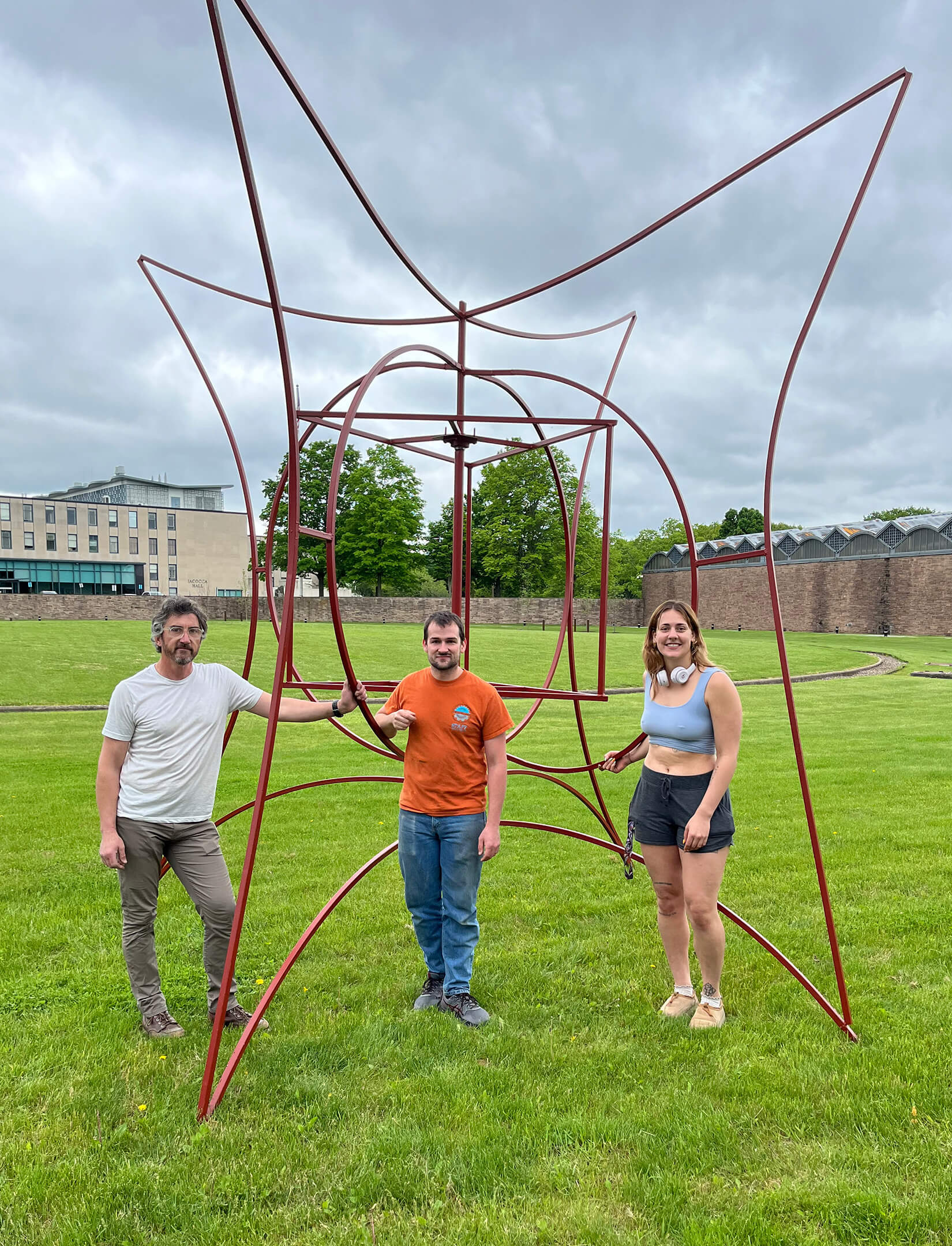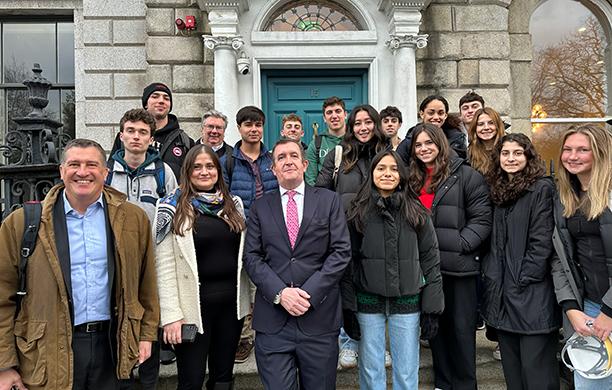Christine Ussler ’81 spent four decades juggling her roles as a professional architect and professor of practice in the art, architecture and design department in the College of Arts and Sciences. After years of influencing generations of Lehigh-educated architects while also setting a standard for excellence at her firm, Artefact Inc., she retired at the end of the spring 2024 semester.

“I’m 70 years old, and I think I need to calm this down a little,” she says with a smile. There is a twinkle in her eyes behind her oversized dark-rimmed glasses.
Her amusement might stem from an awareness that no one would characterize her retirement plans as “calming this down.” Where other retirees might travel, write a book, or enjoy some well-earned downtime, Ussler has a roster of projects lined up — many related to Lehigh.
Housing Solutions in History
She notes that she is still available to teach as an adjunct faculty member (“if I’m needed”) while she continues to work on several projects. She is bringing her considerable professional experience to the recently launched Small Cities Lab in the College of Arts and Sciences. The lab offers an interdisciplinary approach to tackling issues in communities with fewer than 250,000 people. Ussler is working with fellow architecture faculty member Wes Hiatt on the first project launching under the lab’s umbrella, the Alley House program.
Ussler has specialized in the restoration and adaptive reuse of historic buildings, an interest she traces back to the farmhouse from the 1700s that her family renovated. It makes her a natural for alley houses, which are a historic building type. Built on land already occupied by a primary residence — usually in its backyard — they were common in Bethlehem and other small cities. Under a unique partnership between Lehigh, the city of Bethlehem, and Community Action Lehigh Valley, an anti-poverty organization that works to improve affordable housing and increase economic opportunity, a prototype for an affordable alley house in West Bethlehem will be built in 2024–25.
“I love the history in it,” Ussler says of the project. “Bethlehem has been through housing crises in the past because of the need for housing for workers in the steel mills and other factories, and we are in one now. Certainly alley houses won't solve the problem, but they will contribute to the solution.”
She and Hiatt also are completing a design study for a new safe house for Turning Point of the Lehigh Valley, a domestic violence organization based in Bethlehem. They worked with students to research options. Ussler explains that the project studied a concept known as trauma-informed design in making recommendations for locating a new facility and for its design.
“The idea is to consider how the physical environment impacts those who have been traumatized by events in their lives," Ussler explains. That might mean prioritizing the creation of a safe environment, avoiding triggers, fostering trust through thoughtful design choices, creating flexible and adaptable spaces that can cater to the diverse needs of individuals, choosing calming colors, and considering the ways that natural light is brought into a building.

Transforming the Community
Ussler and her students aren’t done making their mark — quite literally — on the community. A project started in fall 2023 in partnership with the city of Bethlehem and the Lehigh University Art Gallery will re-envision the public art panels on the South Bethlehem Greenway. It’s a first step for the larger vision to advance the place-making potential of the greenway to become a magnet for the community.
“It came from me walking along the greenway and seeing these white display panels that were just built ad hoc … They’re not really beautiful structures. I just thought it would be a wonderful project for students to study,” Ussler says. “Public art in a park-like setting can help revitalize communities.”
As part of the fall class, students designed multiple art display panels, sculptures in themselves, as prototypes for the greenway. Several of the prototypes were fabricated by the students in the spring ‘24 semester. The three panels built will remain on campus on the green in front of Building C. An art show featuring work by Lucy Gans, professor of art, will be displayed on the student-built panels this summer. The prototypes will inform the larger vision for new public art panels in the future as another Small Cities Lab endeavor.
It is not the first time that Ussler and her students have added beauty to the greenway. The Chinese-Heting Harmony Pavilion, a project headed by Norman Girardot, university distinguished professor emeritus of religion studies, with Ussler’s assistance was designed and erected by Ussler and Girardot’s students and dedicated in 2013.

“They learned how to cut stones, they felled and debarked the trees which have become the posts. They cut every piece of the roof structure,” Ussler recalls. “That was an enormous undertaking over two semesters or more.”
In retirement, Ussler also hopes to work on another highly visible project that will impact South Bethlehem: assisting ArtsQuest on the adaptive reuse of Bethlehem Steel’s Turn and Grind shop, one of the steelmaker’s few surviving structures.
She candidly admits she cannot imagine a time when she is not involved with Lehigh. “It’s kind of in my backyard,” she says, noting that her architecture firm is two blocks away on East Third Street. “I do love Lehigh, and Lehigh has been very, very good to me over the years. It is so much of my life.”


